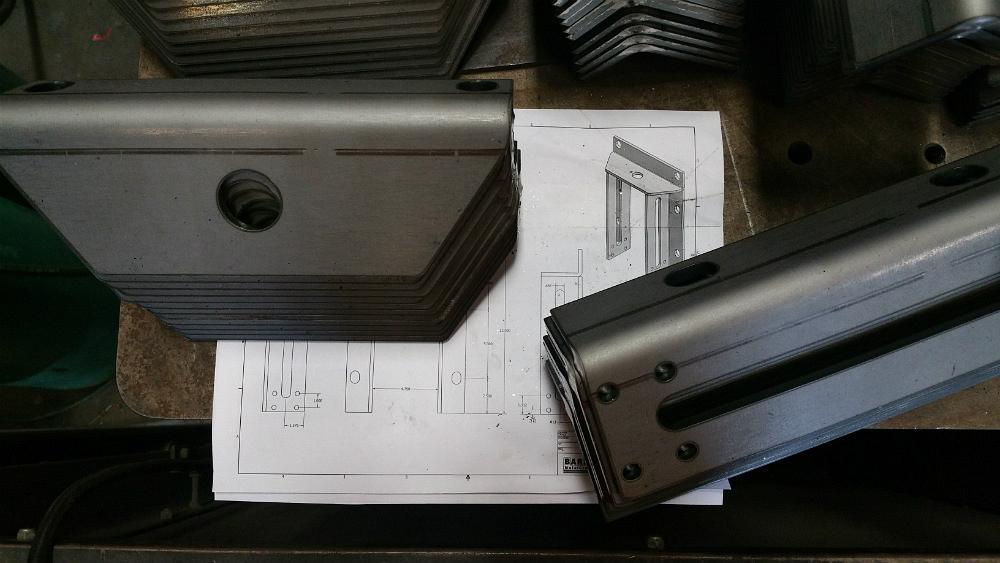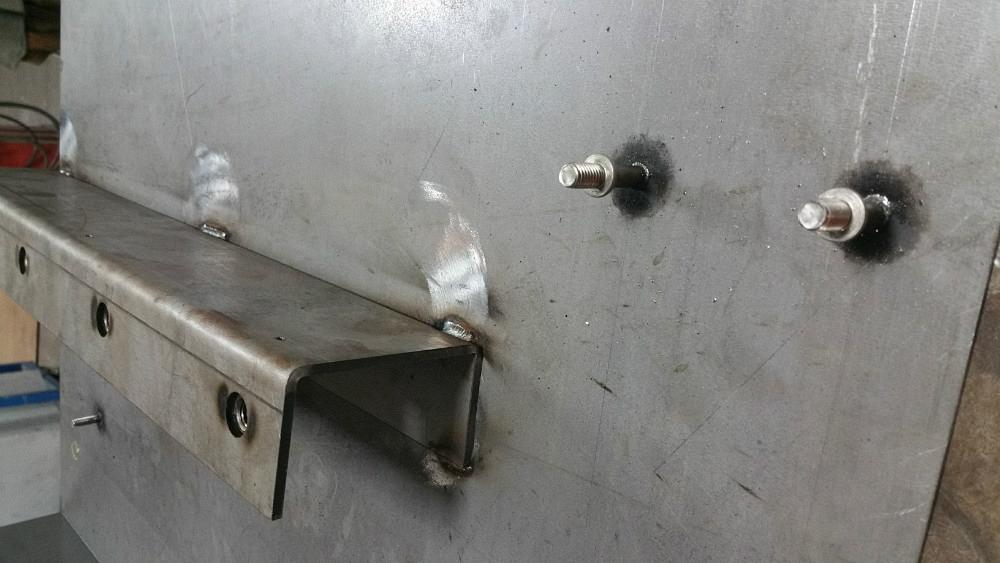- FMA
- The Fabricator
- FABTECH
- Canadian Metalworking
Categories
- Additive Manufacturing
- Aluminum Welding
- Arc Welding
- Assembly and Joining
- Automation and Robotics
- Bending and Forming
- Consumables
- Cutting and Weld Prep
- Electric Vehicles
- En Español
- Finishing
- Hydroforming
- Laser Cutting
- Laser Welding
- Machining
- Manufacturing Software
- Materials Handling
- Metals/Materials
- Oxyfuel Cutting
- Plasma Cutting
- Power Tools
- Punching and Other Holemaking
- Roll Forming
- Safety
- Sawing
- Shearing
- Shop Management
- Testing and Measuring
- Tube and Pipe Fabrication
- Tube and Pipe Production
- Waterjet Cutting
Industry Directory
Webcasts
Podcasts
FAB 40
Advertise
Subscribe
Account Login
Search
Communicating is key
Aha! moments lead to better communication, collaboration
- By Nick Martin
- July 25, 2017
Some new hires are blessed with a mentor, boss, or co-worker who can help guide them along as they learn the job. Showing them the ropes and answering what may be simple questions are necessary for providing a firm foundation.
Sometimes new hires are thrown into the pit to sink or swim. Such was the case when one of our customers recently hired Justin, an Inventor® CAD guy who was to handle a lot of the customer’s in-house design work and drawings while organizing a rapidly growing part library. Some of these parts were drawn or conceptualized by the customer, and others were designed by us. We needed to get on the same page to save time and money for both companies.
In the past we have offered the customer’s CAD guys an open invitation to come to our facility and see how we do things. They never showed any interest, and we watched as their files, for the most part, remained subpar. Rarely could we take one of their 3-D models and work with it. It often needed to be fixed or redrawn before we could produce the product properly. Seeing a process unfold often can be a significant eyeopener, and this was something these designers needed to do.
After he started getting his feet wet, Justin took us up on the offer. He really didn’t have an Autodesk® Inventor mentor; he was given the two- or three-day company crash course before the former CAD engineer departed.
When I first met Justin, I asked if he was familiar with sheet metal inside Inventor, and he said he wasn’t really exposed to it in school. I told him we could help get him started. Most of his knowledge was in solid modeling, which was good for his job, but having sheet metal experience would be a little more helpful for us. I was surprised to see how quickly he wanted to come see us, and before we knew it, he was standing in the front office, a sponge for knowledge.
I introduced Justin to our other Inventor specialist, Doug Teets, before we started on the $5 tour. Doug has been with us a year and a half, learning Inventor and how parts are produced. I figured he would be a good source to back me up when we made our way back to the office for some sheet metal design time.
We walked into the shop, and Justin immediately smiled and said, “Whoa! Look at that!” He was excited and eager to see everything in the shop. It is nice when you encounter people who are thirsty for knowledge and find pure joy in what they are doing. The timing of the tour was convenient, because we were running some of his company’s parts on our laser, and we had others at the press brake waiting their turn.
I wanted to show Justin how his parts flowed through the shop and show him some of our other products that aren’t remotely close to what he is used to seeing. A lot of it is “the same, but different” kind of stuff, but you never know until you see it.
After the quick tour, we made our way into the office to sit down and begin some sheet metal show-and-tell. I began with a model he recently sent us to produce. It was a long, ⅜-in.-thick, rectangular part with several square cutouts and about 16 holes—a pretty straightforward part from my point of view, but I found several issues that I wanted to pick apart and explain.
I began with the keep it simple, stupid (KISS) method. I told Justin that although we were able to make his part, his design was missing a couple of corner rounds and his model was not “smart.” Not smart meant that further down the line, it would be very difficult to document a drawing or make simple changes if needed. His sketches were overdimensioned and constraints were not used. To cap it off, his part could have been modeled in half the time it probably took him.
This may sound like a foreign language to some of you, but this was something Justin needed to hear. I was telling him and showing him things that he had never heard from any of his professors. Maybe I have watched too much YouTube or drilled these practices into my brain. Either way, the simple things he was learning began opening his eyes to how much there was to learn.
Justin was taking it all in like a champ. I decided to show him a couple more things that I was nearly 100 percent sure he was not doing or hadn’t learned in school. One was the art of making an iPart, in which you basically use parameters to create and drive several parts that are similar. This is done via a defined spreadsheet in which columns show variables and rows show part numbers. You can create tons of parts easily and make a tabulated drawing in a fraction of the time normally required.
The look on his face was priceless when I began flipping through several of his company’s parts with a click of the mouse using that logic. As the parts were dancing and changing on my screen, I could have thrown a paper ball in his mouth. He was kicking his own jaw and mumbling something about how much time he could have saved in the past few weeks.
Justin then told me he was more of a hands-on learner and wanted to drive. I completely respected that as I am the same way. I let him have the wheel and told him to try the SpacePilot Pro 3-D mouse as well. I think he was blown away by the setup we had and spun the current model right off the screen.
He dived right in, asking a bunch of really good questions. We created his first iPart, and he was seeing how much time he could save by making one single part that would change instead of a dozen others. Parameters could be linked to mating parts, and overall assemblies could be much less of a hassle to create.
I also showed him how he could put an assembly inside of another assembly so that it could be patterned or reproduced. In the back of my mind I was thinking about all of the time he must have spent producing assemblies and drawings of what his company wanted to make. He was scratching his head with a million different ideas.
Overall, I think his visit was very much a success, and he was already telling me he wanted to come back in a couple of weeks. We laughed and said he was welcome. The guys in the shop were appreciative that he was there, because it would make everyone’s job a little easier if he could improve the communication involving his employer’s parts.
A few days went by and some of us stopped by the customer’s facility. I poked my head in Justin’s office and saw a bunch of washers in an assembly on his screen. I asked what he was doing, and he said he was getting them from the content center (Inventor’s native “hardware store”) and constraining them. He looked at me and asked if I knew of an easier way. I nodded and said, “I’m assuming you are putting nuts and bolts on there as well.”
He got up from his desk and asked me if I had a couple minutes to show him how I would handle what he was attempting to do. I gladly sat down and showed him how to achieve a “bolted connection.” He could easily do the same thing by selecting all of his hardware and mating them to existing holes. Saving time is the key, and Justin was excited to see this cool feature.
We also talked to one of his superiors and told her we needed to get on the same page as far as software versions go. Most 3-D modeling programs are not backwards-compatible, which is the case with Inventor. She agreed that they needed to get up-to-date, and we offered to share some of our work with them.
While some shops wait, we always update our software. It’s important that we and our customers are on the same page. Communication is key, and we would be able to help Justin improve his skills considerably if he could see how we made some parts without the need for a face-to-face meeting.
Justin had all the foundation skills to make Inventor work the way I imagine his company needed it to. He needed his eyes opened so that he could see what could be done with the software. Doug or I could be his fallback guy, and his parts will be improved considerably. If we can turn half of Justin’s Aha! moments into reality, it will be a success for all involved.
All images courtesy of Barnes MetalCrafters.
subscribe now

The Fabricator is North America's leading magazine for the metal forming and fabricating industry. The magazine delivers the news, technical articles, and case histories that enable fabricators to do their jobs more efficiently. The Fabricator has served the industry since 1970.
start your free subscriptionAbout the Author

Nick Martin
2121 Industrial Park Drive SE
Wilson, NC, 27893
252-291-0925
Related Companies
- Stay connected from anywhere

Easily access valuable industry resources now with full access to the digital edition of The Fabricator.

Easily access valuable industry resources now with full access to the digital edition of The Welder.

Easily access valuable industry resources now with full access to the digital edition of The Tube and Pipe Journal.
- Podcasting
- Podcast:
- The Fabricator Podcast
- Published:
- 04/16/2024
- Running Time:
- 63:29
In this episode of The Fabricator Podcast, Caleb Chamberlain, co-founder and CEO of OSH Cut, discusses his company’s...
- Trending Articles
Tips for creating sheet metal tubes with perforations

JM Steel triples capacity for solar energy projects at Pennsylvania facility

Are two heads better than one in fiber laser cutting?

Supporting the metal fabricating industry through FMA

Omco Solar opens second Alabama manufacturing facility

- Industry Events
16th Annual Safety Conference
- April 30 - May 1, 2024
- Elgin,
Pipe and Tube Conference
- May 21 - 22, 2024
- Omaha, NE
World-Class Roll Forming Workshop
- June 5 - 6, 2024
- Louisville, KY
Advanced Laser Application Workshop
- June 25 - 27, 2024
- Novi, MI





























